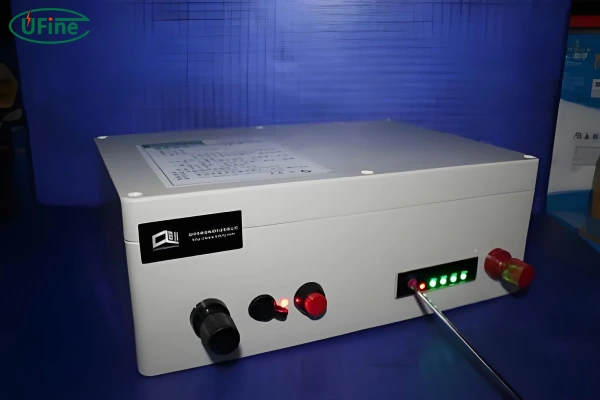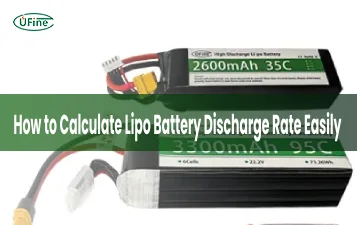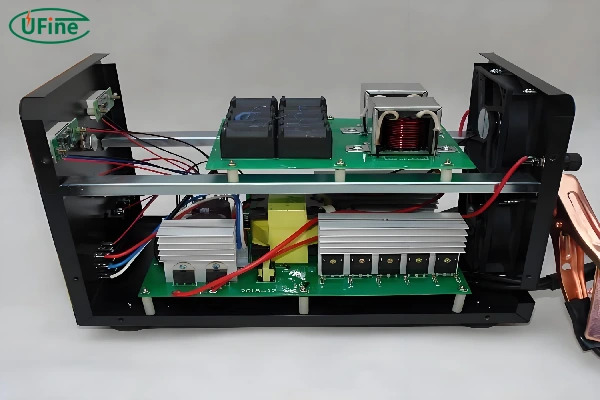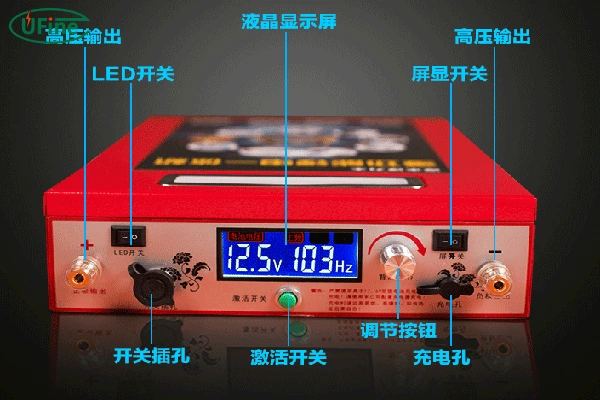This comprehensive guide will delve into the battery inverters, exploring their inner workings, diverse applications, and key considerations for choosing the right one for your specific needs. We’ll unravel the mysteries behind their operation, examine the different types available, and equip you with the knowledge to make informed decisions about incorporating these powerful devices into your life.
Part 1. What is the battery inverter?

At its heart, a battery inverter is an electronic device that transforms direct current (DC) electricity, typically stored in a battery, into alternating current (AC) electricity, the type used by most household appliances and electronic devices. This conversion is essential because batteries store energy in DC form, while our homes and workplaces run on AC power.
Part 2. Battery inverter’s mechanism
The process of converting DC to AC within a battery inverter involves a complex interplay of electronic components and sophisticated circuitry. Let’s break down the key steps:
-
DC Input: The inverter receives DC power from the battery bank, which is typically composed of multiple batteries connected in series or parallel to achieve the desired voltage and capacity.
-
Switching Circuitry: The heart of the inverter is a switching circuit that rapidly switches the direction of the DC current, creating a pulsating waveform. This rapid switching is crucial for emulating the alternating nature of AC power.
-
Waveform Shaping: The switching circuit’s output is not yet a pure sine wave, the ideal waveform for AC power. The inverter employs additional circuitry to smooth out the pulsating waveform, creating a more sinusoidal output.
-
Voltage Regulation: The inverter incorporates voltage regulation circuitry to ensure the AC output voltage matches the standard voltage required by household appliances and electronics, typically 120V or 240V.
-
Frequency Control: The inverter also controls the frequency of the AC output, ensuring it aligns with the standard frequency of the power grid, typically 50Hz or 60Hz. This frequency control is crucial for ensuring compatibility with appliances and electronics.
Part 3. Key parameters
When selecting a battery inverter, several key parameters should be carefully considered to ensure it meets your specific power requirements and application:
-
Power Output: This parameter, measured in watts (W) or kilowatts (kW), indicates the maximum power the inverter can deliver. It’s crucial to choose an inverter with a power output sufficient to handle the total power consumption of the appliances and devices you intend to power.
-
Voltage Input: This parameter refers to the voltage of the battery bank that the inverter will draw power from. Common battery voltages include 12V, 24V, and 48V, and choosing the correct voltage is essential for compatibility.
-
Voltage Output: This parameter indicates the voltage of the AC power that the inverter produces. Standard household voltage is typically 120V or 240V, depending on your location.
-
Waveform: The waveform refers to the shape of the AC output signal. Pure sine wave inverters produce a smooth, clean waveform that is compatible with most appliances and electronics, including sensitive equipment like computers and medical devices. Modified sine wave inverters produce a less smooth waveform that may not be compatible with all appliances, particularly those with motors or sensitive electronics.
-
Efficiency: The efficiency of an inverter is measured as the percentage of DC power converted into AC power. Higher efficiency means less energy is lost during the conversion process, resulting in greater energy savings and reduced operating costs.
-
Frequency: The frequency of the AC output should match the standard frequency of your power grid. In most regions, the standard frequency is either 50Hz or 60Hz. Choosing an inverter with the correct frequency ensures compatibility with appliances and electronics.
Part 4. Battery inverter features
Modern battery inverters are not simply basic DC-to-AC converters; they are equipped with a range of advanced features that enhance their functionality, reliability, and user experience:
-
Automatic Transfer Switch: This feature automatically switches to battery power in case of a grid outage, ensuring uninterrupted power supply to essential appliances and electronics. It provides seamless transition between grid power and battery power, preventing disruptions to your daily activities.
-
Remote Monitoring: Some inverters offer remote monitoring capabilities, allowing you to check the battery status, power consumption, and other parameters from your smartphone or computer. This feature provides valuable insights into your energy usage and allows you to manage your battery system remotely.
-
Solar Compatibility: Many inverters are compatible with solar panels, allowing you to charge your batteries using solar energy. This feature enables you to harness renewable energy sources and reduce your reliance on the grid.
-
Surge Protection: Inverters often include surge protection circuits to protect your appliances from power surges, which can damage sensitive electronics. This feature safeguards your valuable equipment and ensures long-term reliability.
-
Battery Management System (BMS): Some inverters include a BMS that monitors and manages the battery bank, ensuring optimal performance and longevity. The BMS monitors battery voltage, current, temperature, and state of charge, optimizing charging and discharging cycles for extended battery life.
Part 5. Different types of battery inverters
Battery inverters come in various types, each tailored to specific applications and power requirements. Understanding the different types is crucial for choosing the right inverter for your needs:
-
Off-Grid Inverters: These inverters are designed for off-grid systems, providing power independent of the utility grid. They typically have higher power output, are often equipped with solar charging capabilities, and are suitable for remote locations or situations where grid power is unavailable or unreliable.
-
Grid-Tied Inverters: These inverters are designed to work in conjunction with the utility grid, providing backup power during outages. They typically have lower power output and are often more affordable than off-grid inverters. Grid-tied inverters are suitable for homes and businesses where grid power is available but outages are a concern.
-
Hybrid Inverters: These inverters combine the features of off-grid and grid-tied inverters, offering both backup power and the ability to use solar energy to charge batteries. They provide flexibility and versatility, allowing you to leverage both grid power and renewable energy sources.
Part 6. Diverse uses of battery inverters
Battery inverters have a wide range of applications, extending beyond simply providing backup power for homes and businesses. Their versatility makes them valuable in various settings:
-
Home Backup Power: Battery inverters can provide backup power during grid outages, ensuring essential appliances and electronics remain operational. This is particularly important for homes with medical equipment, security systems, or other critical devices that require continuous power.
-
Off-Grid Power: In remote locations without access to the grid, battery inverters can provide a reliable source of power for homes, businesses, and other applications. They enable off-grid living, allowing people to live independently of the grid and rely on renewable energy sources.
-
RV and Marine Power: Battery inverters are commonly used in RVs and boats to provide AC power from batteries, allowing you to enjoy the comforts of home while on the go. They enable the use of appliances like refrigerators, microwaves, and entertainment systems in recreational vehicles and marine vessels.
-
Solar Power Systems: Battery inverters are essential components of solar power systems, converting DC power from solar panels into AC power for use in homes and businesses. They allow you to harness the power of the sun and reduce your reliance on fossil fuels.
-
Emergency Power Supplies: Battery inverters can provide emergency power for critical equipment and systems, such as medical devices, communication systems, and data centers. They ensure the continued operation of essential services during power outages, safeguarding public safety and critical infrastructure.
Part 7. Key considerations to choose the right inverter
Choosing the right battery inverter requires careful consideration of your specific needs and application. Here are some key factors to consider:
-
Power Requirements: Determine the total power consumption of the appliances and devices you intend to power. Choose an inverter with a power output that can handle the load.
-
Battery Bank Capacity: Ensure the battery bank capacity is sufficient to meet your power needs for the desired duration. A larger battery bank will provide longer backup time, while a smaller bank may be sufficient for short-term outages.
-
Waveform: Consider the type of appliances you plan to power. Pure sine wave inverters are compatible with most appliances, while modified sine wave inverters may not be suitable for sensitive electronics.
-
Features: Determine which features are essential for your application, such as automatic transfer switch, remote monitoring, solar compatibility, and surge protection. Choose an inverter that offers the features that best meet your needs and preferences.
-
Budget: Set a budget and choose an inverter that fits within your price range. Inverters with higher power output, advanced features, and premium brands typically cost more.
-
Warranty and Support: Choose a reputable brand with a good warranty and reliable customer support. A warranty provides peace of mind and ensures that you have access to support if needed.
Related Tags:
More Articles

LiPo Battery Discharge Rate Guide & Calculation Tips
Understand LiPo battery discharge rates, C-ratings, and how to calculate max current. Essential guide for RC, drones, and electronics users.
High‑Capacity 3S LiPo Batteries: 5000 mAh vs. 10000 mAh
Compare 3S LiPo 5000mAh vs 10000mAh batteries by weight, power, and use. Find the best fit for your drone, RC car, or boat setup.
Top 5 Applications for Small 3S LiPo Batteries
Small 3S LiPo batteries power drones, RC gear, wearables, and robotics with high energy and low weight. Making them ideal for compact electronics projects.
Building and Charging Your Own 3S LiPo Pack: A Step‑by‑Step Guide
Learn how to build, balance, and charge a 3S LiPo battery pack safely at home with this complete DIY guide for hobbyists and beginners.
How to Choose the Right LiPo Battery Plug Type?
Discover the best LiPo battery plug types, how to choose them, and expert tips for safe usage, soldering, and maintenance.





